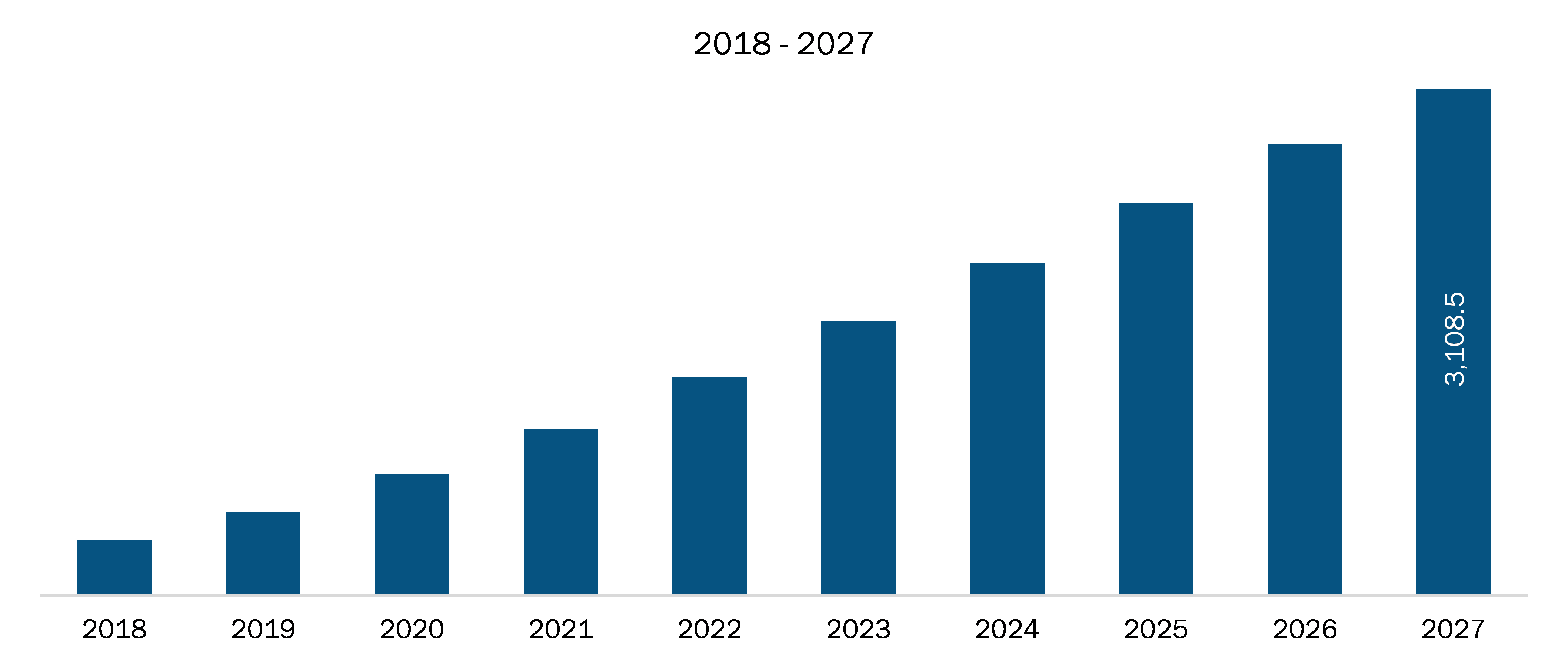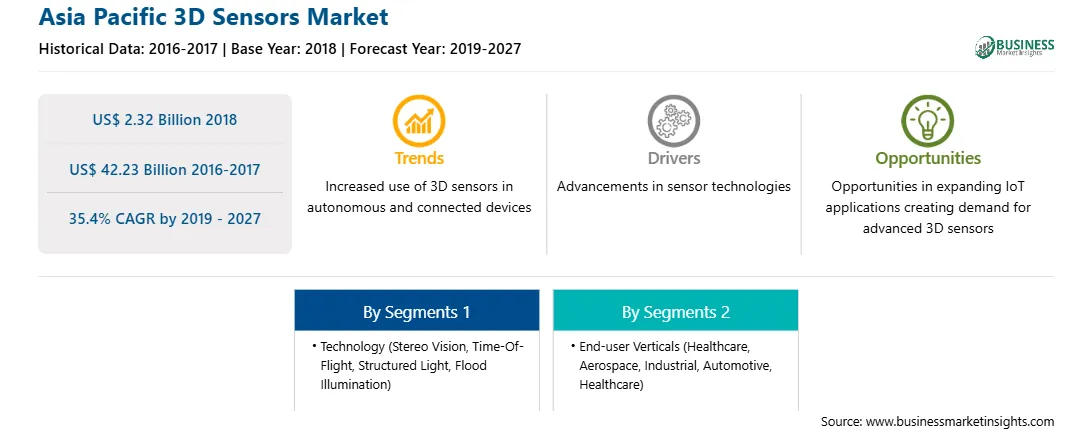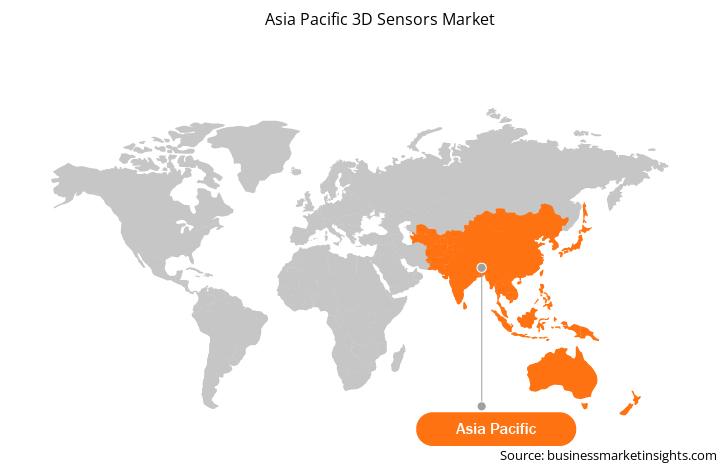3D sensors market in Asia-Pacific is expected to grow from US$ 2.32 Bn in 2018 to US$ 42.23 Bn by the year 2027. This represents a CAGR of 35.4% from the year 2019 to 2027.
The consumer electronics industry is witnessing immense growth in both developed and developing countries, and advancements and smart features that are offered by the manufacturing companies have been the major contributors to this growth. Currently, various consumer electronics devices are used by individuals for a plethora of tasks. Consumer electronics such as smartphones, tablets, PCs, TVs, washing machines, fridge, and music players have become an integral part of routine lives. All these devices are becoming smarter with the ongoing technological advancements and integration of the Internet of Things (IoT) and Artificial Intelligence (AI). The advancements in sensor technology have paved the way for the remarkable growth of IoT and AI in most of the technological areas, including the automotive sector. The market for consumer electronics devices is continually growing, with the manufacturers coming up with advanced technologies and features in their devices on a regular basis and rising disposable incomes of users in the developed and developing economies.
Some of the prominent smartphone manufacturers have pioneered the integration of 3D ToF sensors into their smartphone models. Leading global smartphone manufacturers such as Huawei, Samsung, Oppo, LG, and Apple are the pioneers in the integration of 3D ToF sensors into various models. Huawei P30 Pro, Samsung Galaxy S10 5G, Oppo RX17 Pro, Honor View 20, LG G8 ThinQ, and iPhone 2020 models have integrated or have planned to incorporate the 3D ToF sensors into the models.
Currently, China is dominating the Asia-Pacific 3D sensors market in terms of installation, which in turn boost the demand for 3D sensors market in the region. China is the largest market globally for 3D sensor implementations. Given the steady rise in income among Chinese consumers on average, the proportion of luxury vehicles among the population will also increase, giving way to more high-end vehicles equipped with OEM 3D sensor systems. In 2016, China was the largest manufacturer of passenger cars in the world. This steep rise in production can be attributed to the burgeoning numbers of local OEMs along with setting up manufacturing plants of global automobile manufacturers. The figure given below highlights the revenue share of Rest of Asia-Pacific in the Asia-Pacific 3D sensor market in the forecast period:

Strategic insights for the Asia Pacific 3D Sensors provides data-driven analysis of the industry landscape, including current trends, key players, and regional nuances. These insights offer actionable recommendations, enabling readers to differentiate themselves from competitors by identifying untapped segments or developing unique value propositions. Leveraging data analytics, these insights help industry players anticipate the market shifts, whether investors, manufacturers, or other stakeholders. A future-oriented perspective is essential, helping stakeholders anticipate market shifts and position themselves for long-term success in this dynamic region. Ultimately, effective strategic insights empower readers to make informed decisions that drive profitability and achieve their business objectives within the market.

| Report Attribute | Details |
|---|---|
| Market size in 2018 | US$ 2.32 Billion |
| Market Size by 2027 | US$ 42.23 Billion |
| Global CAGR (2019 - 2027) | 35.4% |
| Historical Data | 2016-2017 |
| Forecast period | 2019-2027 |
| Segments Covered |
By Technology
|
| Regions and Countries Covered | Asia-Pacific
|
| Market leaders and key company profiles |
The geographic scope of the Asia Pacific 3D Sensors refers to the specific areas in which a business operates and competes. Understanding local distinctions, such as diverse consumer preferences (e.g., demand for specific plug types or battery backup durations), varying economic conditions, and regulatory environments, is crucial for tailoring strategies to specific markets. Businesses can expand their reach by identifying underserved areas or adapting their offerings to meet local demands. A clear market focus allows for more effective resource allocation, targeted marketing campaigns, and better positioning against local competitors, ultimately driving growth in those targeted areas.

ASIA-PACIFIC 3D SENSORS MARKET - SEGMENTATION
Asia-Pacific 3D sensors Market – By
Technology
Asia-Pacific 3D sensors Market – By
End-user Vertical
Asia-Pacific 3D sensors Market – By
Country
Asia-Pacific 3D sensors Market -Companies Mentioned
The List of Companies - Asia Pacific 3D Sensors Market
The Asia Pacific 3D Sensors Market is valued at US$ 2.32 Billion in 2018, it is projected to reach US$ 42.23 Billion by 2027.
As per our report Asia Pacific 3D Sensors Market, the market size is valued at US$ 2.32 Billion in 2018, projecting it to reach US$ 42.23 Billion by 2027. This translates to a CAGR of approximately 35.4% during the forecast period.
The Asia Pacific 3D Sensors Market report typically cover these key segments-
The historic period, base year, and forecast period can vary slightly depending on the specific market research report. However, for the Asia Pacific 3D Sensors Market report:
The Asia Pacific 3D Sensors Market is populated by several key players, each contributing to its growth and innovation. Some of the major players include:
The Asia Pacific 3D Sensors Market report is valuable for diverse stakeholders, including:
Essentially, anyone involved in or considering involvement in the Asia Pacific 3D Sensors Market value chain can benefit from the information contained in a comprehensive market report.